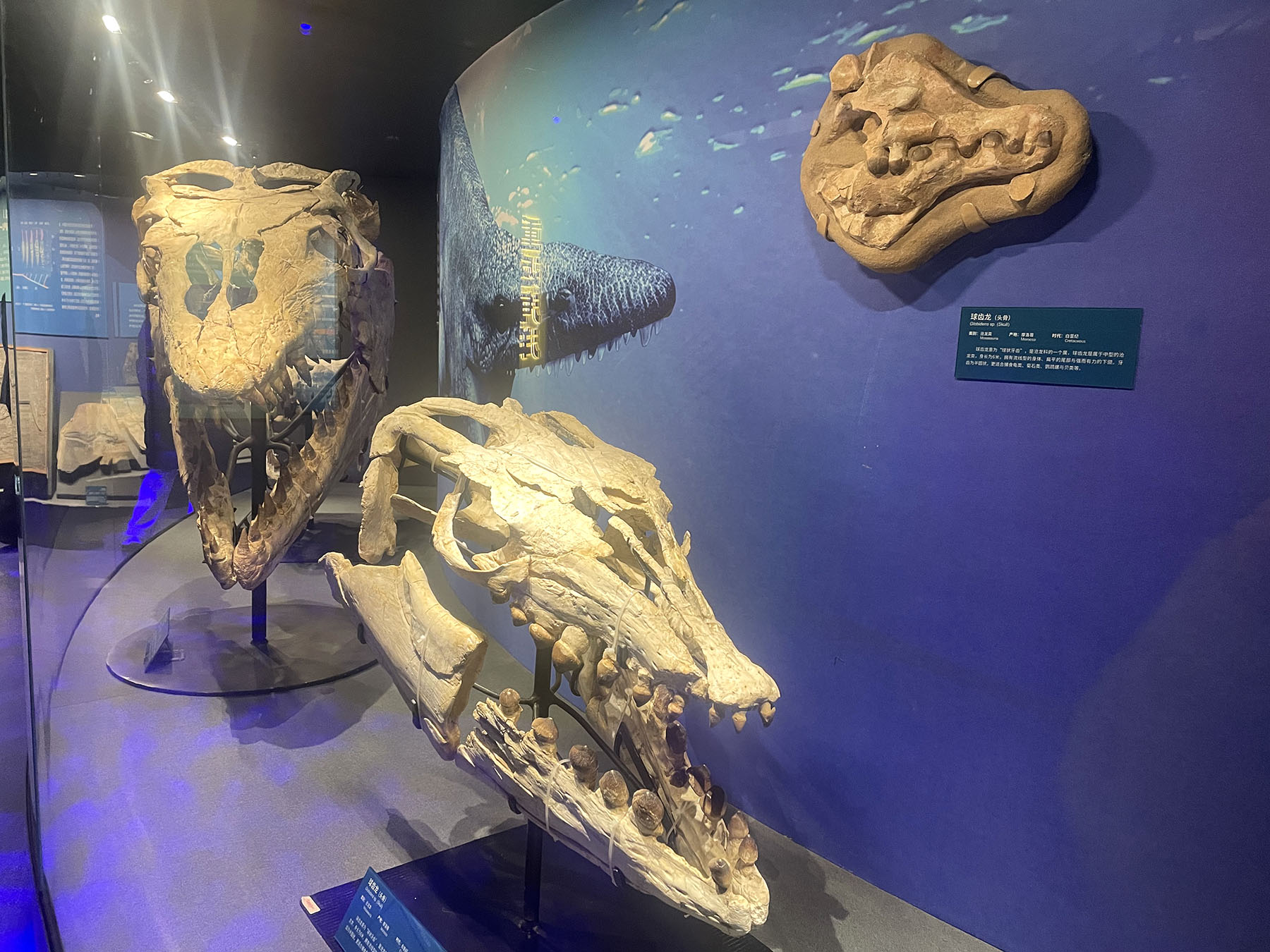
At The Rise of Vertebrates, an ongoing exhibition at the Natural History Museum of China in Beijing, visitors can follow fossil evidence to trace the origins of vertebrates and their journey out of the water to dominate land, sea and air.
Launched on Tuesday to mark the reopening of the hall for ancient reptiles, the permanent exhibition includes 197 exhibits, about 70 percent of which are on display for the first time, according to Wang Baopeng, deputy director of the museum's earth sciences department.
"We have introduced many new exhibits and used modern technology, such as naked-eye three-dimensional display technology and an interactive gaming system, to create an immersive, educational experience. There will be an artificial reality and virtual reality space opening to the public soon," Wang says.
READ MORE: Long before whales, pioneering marine reptile was a filter-feeder
Divided into seven sections, the exhibition follows the timeline of vertebrates, each of which provides detailed insights into the evolutionary journey and key milestones of major groups.
The opening section, Arising from the Ocean, demonstrates how vertebrates originated as ocean-dwelling creatures and includes two Haikouichthys fossils found in Kunming, Yunnan province. The species is often heralded as one of the earliest-known vertebrates, living around 520 million years ago during the Early Cambrian period (538.8-509 million years ago). Often described by media as the "first fish "on earth, it is just 2 or 3 centimeters in length.
In the following section, Conquest of the Land, the Late Devonian period (385.3 to 359.2 million years ago) is brought back to life through vivid models. Over time, certain bony fish developed anatomical structures suited for life on land, ultimately evolving into the diverse groups of tetrapods found today, including amphibians, reptiles, birds and mammals.
The hall also features an exhibit that allows visitors to touch the fossilized remains of a dinosaur. Wang hopes the 600-square-meter newly renovated hall will inspire a new generation of children and paleontologists.
Among the many fossilized stars is a 26-meter-long Mamenchisaurus jingyanensis, a gigantic herbivore that lived around 150 million years ago and had one of the longest necks of its species. It is located in the center of the hall and is one of the longest dinosaur fossils ever found in China.
Besides fossils, there is a video of battles between a Yangchuanosaurus and a Tuojiangosaurus, two dinosaurs found in China, and between a Tyrannosaurus rex and a Triceratops. According to Wang, the video vividly depicts the prehistoric environment, plants and paleontological understanding of these significant dinosaurs.
ALSO READ: Museum's past inspires showcase of the future
Besides the reopening of the hall, an exhibition celebrating the upcoming Year of the Snake opened at the museum on Tuesday. Focused on the titular reptile and zodiac animal representing the upcoming Chinese New Year, which falls on Jan 29, the exhibition will run till Feb 16.
A remarkable selection of 50 snake specimens from the museum's collection presents a full overview of serpentine beauty. Divided into four sections, it explains the origin and evolution of the Chinese zodiac, the cultural symbolism of the snake, its biological features, and its position in folk art.
"Through the event, we hope visitors will get a glimpse into the significant role that the snake plays in Chinese culture and embrace Chinese New Year," says Miao Yuyan, a museum worker.
With a collection of 400,000 historical and current specimens, the 70-year-old Natural History Museum of China is one of the most visited museums in the capital, with some 1.8 million visits every year.


